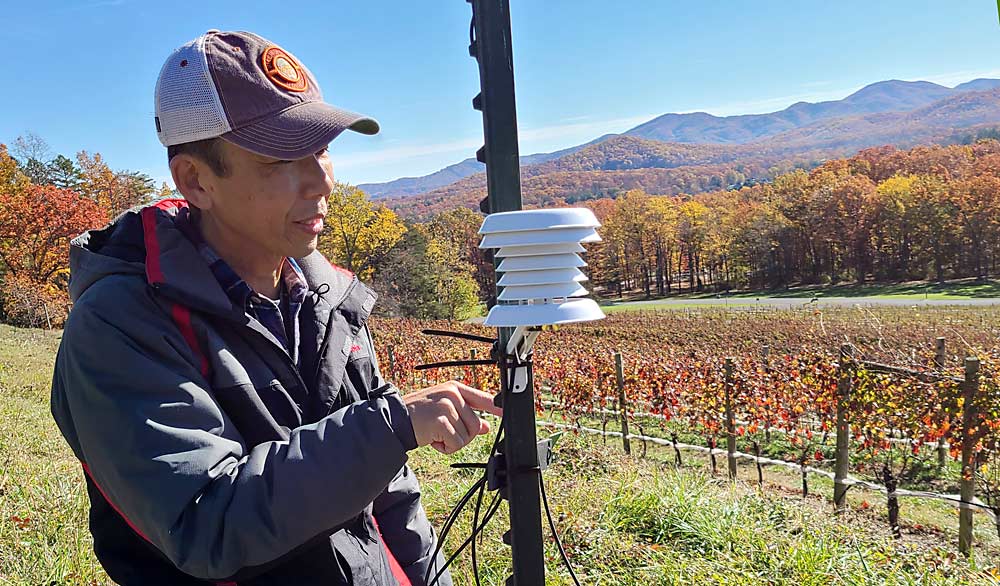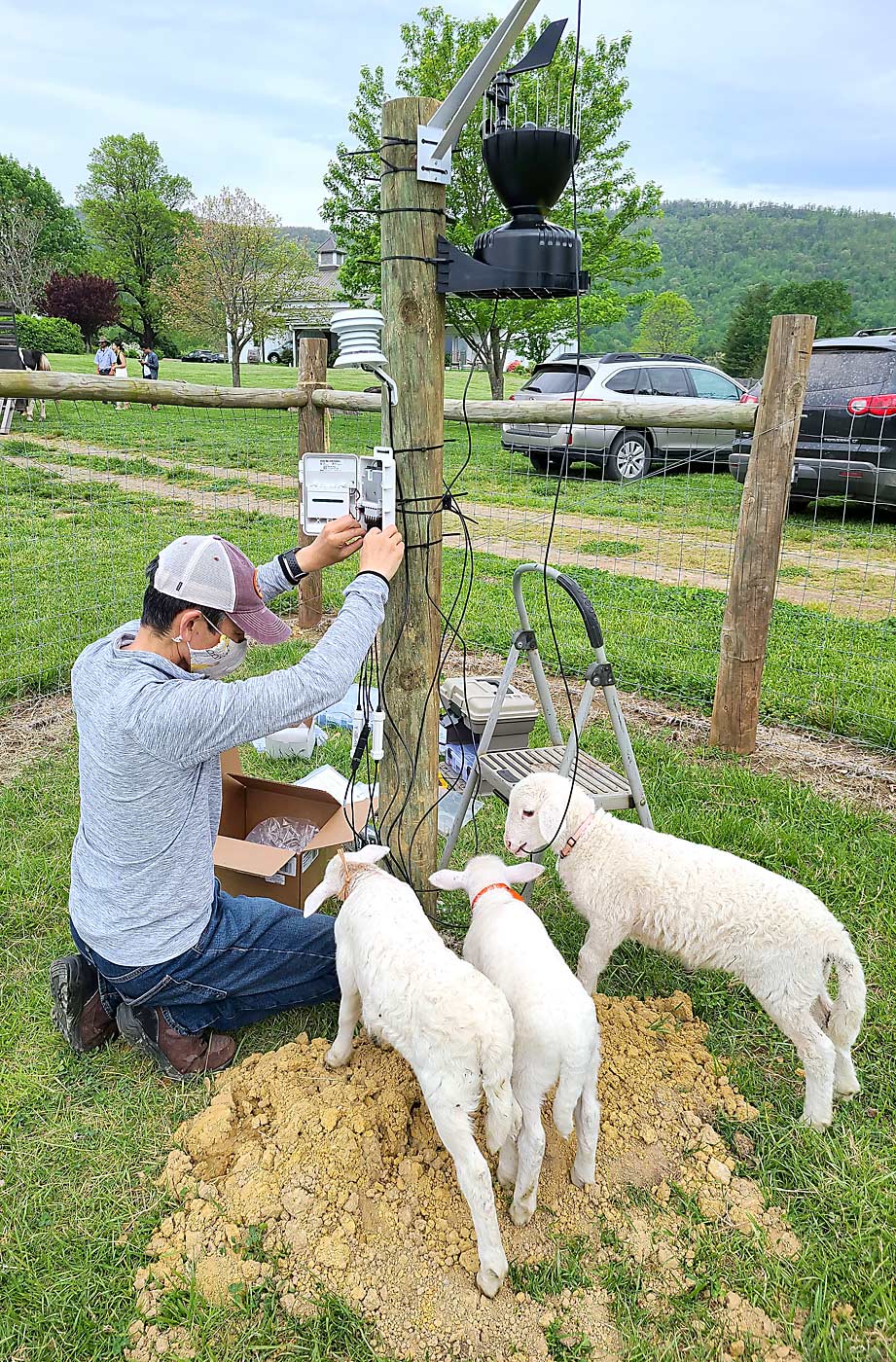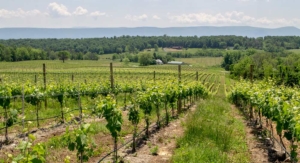
Vineyards in Virginia stretch across a wide range of climates and elevations, and while the state’s wine industry is growing in acreage and value, its geographic sprawl makes it difficult to share regionally relevant information.
To solve the communication problem, Virginia Tech researchers created the Sentinel Vineyard Project a few years ago. Made up of a small group of growers and researchers who routinely meet to share information, the project leaders disseminate the information to the rest of the state — allowing Virginia growers to track weather, pest and phenological trends in a faster, more comprehensive way.
“Before the network, nobody was sharing anything,” said Bill Tonkins, vineyard manager at Veritas Vineyards and Winery in Afton. “Now, we’re all sharing information throughout the state. It raises everybody’s standards.”
The Sentinel Vineyard Project is managed by Virginia Tech researchers Mizuho Nita and Elizabeth Chang, with help from Tremain Hatch and Dana Acimovic. Nita, a grape pathologist, and Chang, an enology extension specialist, are both based at the university’s agricultural research center in Winchester, in the northern part of the state. The majority of Virginia’s vineyards are in its northern and central regions, but there are plenty of vineyards scattered throughout the rest of the state. Keeping all of them informed poses a challenge, Nita said.
Without an effective communication network, growers don’t always hear about a disease or insect moving toward their vines and might not know the best way to combat it. The need for better information has only grown over the years, as Virginia’s wine industry has expanded to about 350 wineries, 450 growers and close to 6,000 acres of grapes (mostly Vitis vinifera varieties), Chang said.
Before the project, Nita would often call growers to gather information for his extension newsletters and reports, but the process was informal and haphazard. He didn’t have time to learn what was happening in every corner of the state.
Nita and others in the Virginia wine industry saw the need for a more effective communication network and, with funding from the Virginia Wine Board, created the Sentinel Vineyard Project, which they loosely modeled on Cornell University’s Véraison to Harvest newsletter.
A group of about 15 growers meets virtually every month to share information about phenology, diseases, pests, sprays, labor, vine management, weather and other relevant topics. As harvest approaches, they also track Brix and pH levels. The Virginia Tech researchers synthesize the information and share it with a larger grower audience in blog posts, newsletters and extension meetings.
Nita also set up 13 weather stations in vineyards across the state, connected to Cornell’s NEWA network. Using the stations, he maps out weather and disease patterns and shares the data with growers.

At Veritas Vineyards and Winery in central Virginia, the weather data helps vineyard manager Tonkins eye disease pressures. He said there was a week in late June when the vineyard had four reports of phomopsis, six of powdery mildew, four of black rot and five of downy mildew.
“Disease pressure is always very high in Virginia,” Tonkins said. “The network tells you what the pressures are and when to fight them.”
His region averages more than 44 inches of rain per year.
If there’s one thing that unifies Virginia’s wine regions, it’s copious amounts of rain and humidity, Chang said.
“We talk about humidity a lot, no matter where we are in the state,” she said.
Downy mildew currently poses the biggest disease problem, but powdery mildew, rots and other diseases are also common. Grape berry moth is the most persistent pest, and spotted lanternfly is now on everybody’s radar, Nita said.
Tonkins, who participates in the monthly grower meetings, said sharing grape ripening and maturity results gives everyone a better idea when to harvest. They also share research results.
Kevin Sutherland, vineyard manager and winemaker at Nicewonder Farm & Vineyards in southwest Virginia, also participates in the Sentinel Vineyard Project. Few vineyards sit in his part of the state, and his previous communication with other Virginia growers mostly consisted of informal conversations during summer and winter meetings.
Sutherland said the growers who participate in the project are “pretty seasoned,” and their experience puts them in a good position to help the state’s newer vineyardists.
“(New growers) have access to much more information than I did when I started growing grapes,” he said.
—by Matt Milkovich







Leave A Comment